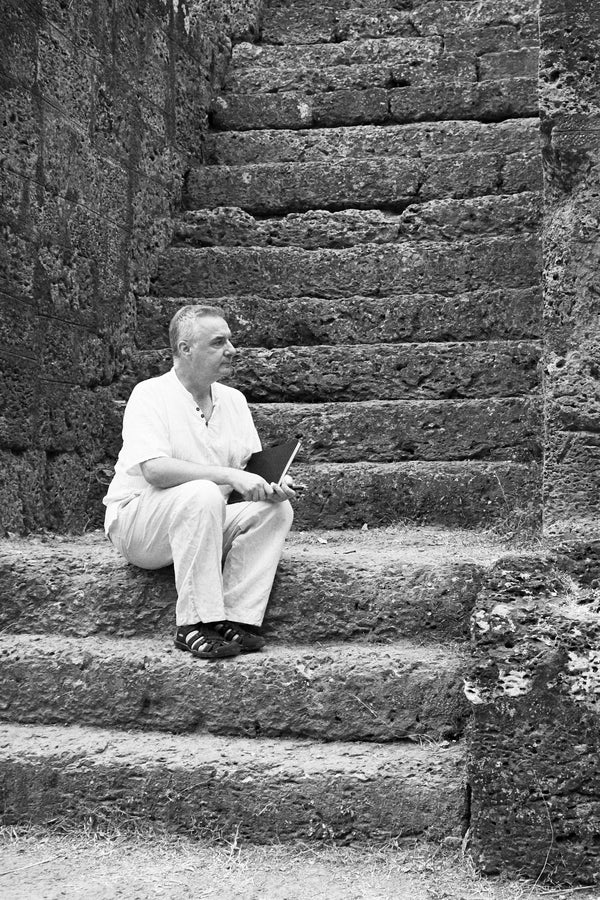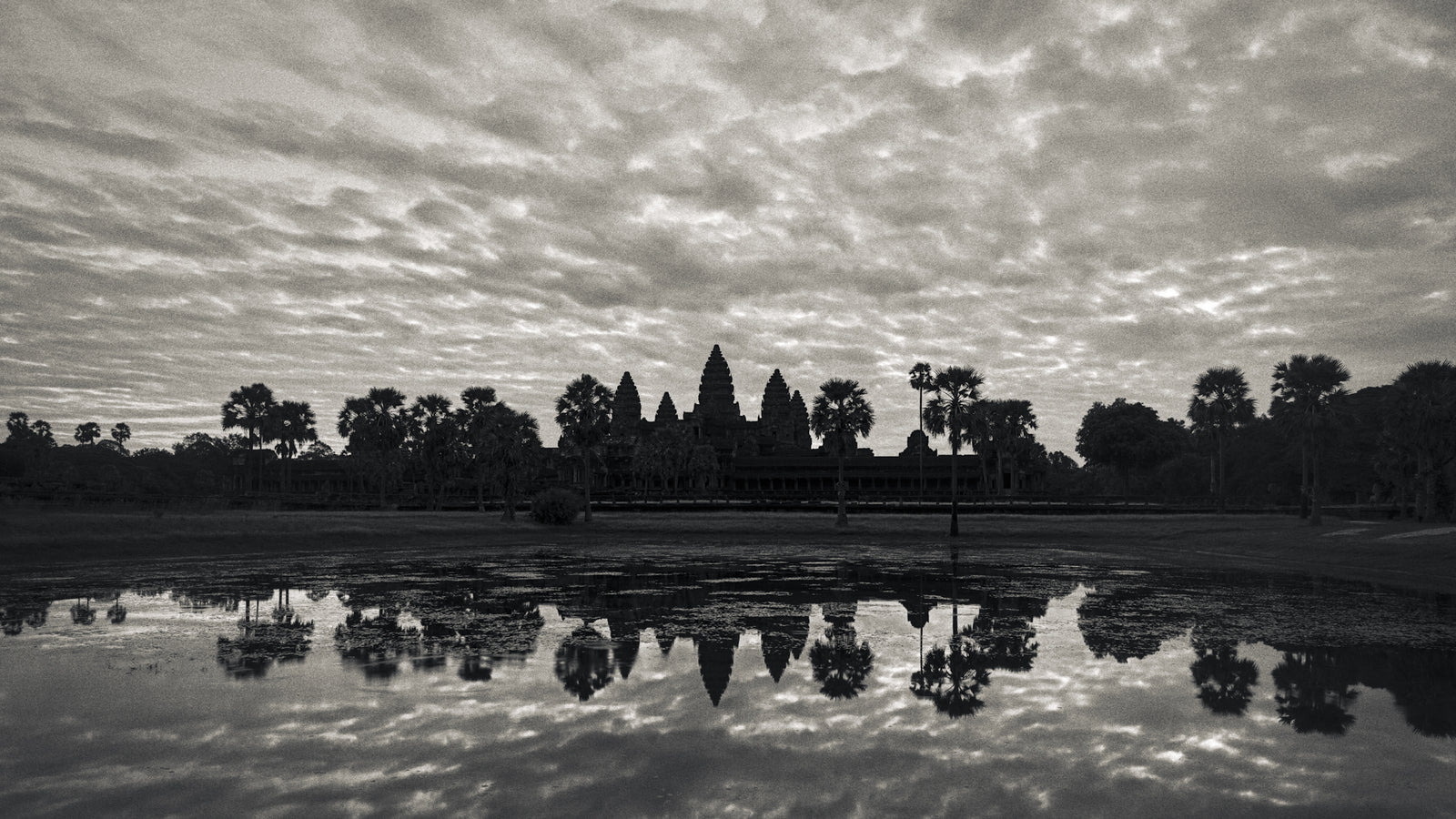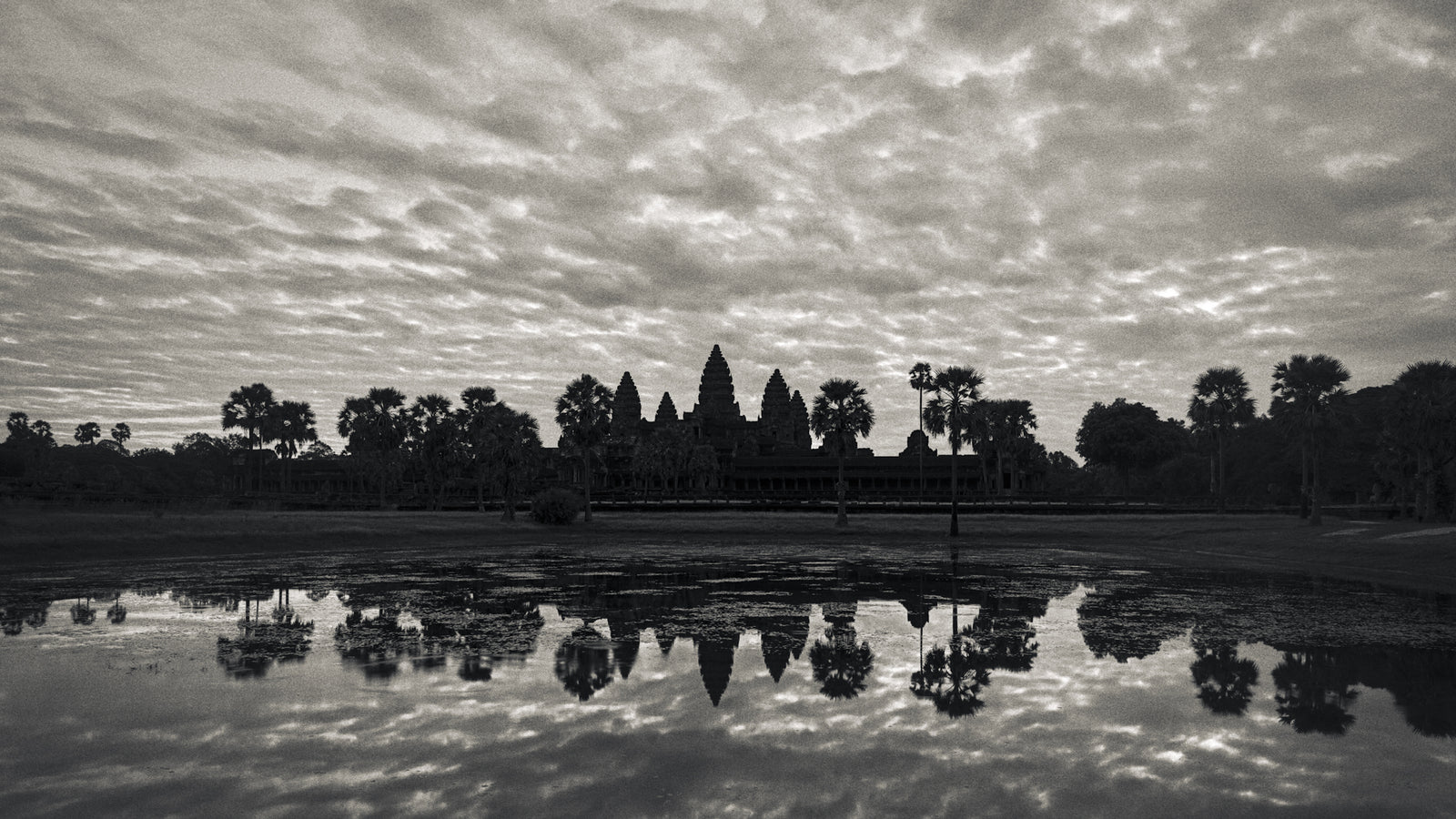Complimentary worldwide shipping on orders over $400 · No import tariffs for most countries
Complimentary worldwide shipping on orders over $400 · No import tariffs for most countries
West Baray
2 min read
The West Baray (Khmer: បារាយណ៍ខាងលិច) or Baray Teuk Thla (Khmer: បារាយណ៍ទឹកថ្លា meaning "clear water reservoir") is a baray, or reservoir, located just west of the walled city of Angkor Thom.
Oriented east-west and rectangular in shape, it and measures approximately 7.8 by 2.1 kilometres (4.8 by 1.3 miles), making the West Baray the largest baray at Angkor and one of the largest hand-cut water reservoirs on Earth, possessing a current maximum capacity of 53 million cubic metres (12 to 14 billion gallons) of water. Its waters are contained by tall earthen dikes measuring 12 m (39') in height.
In the centre of the West Baray is the West Mebon Temple, a Hindu temple built on an artificial island.
Construction of the baray probably began in the 11th century CE during the reign of Suryavarman I and was finished later under King Udayadityavarman II.
The West Baray was a vast reservoir that fed irrigation canals in dry times, allowing multiple crops of rice each year. The baray also had symbolic functions, serving as a vast earthly depiction of the Hindu Sea of Creation, with the West Mebon Temple at its centre representing Mount Meru, home of the gods.
The Angkorian engineers who created the West Baray appear to have incorporated earlier construction. The east dike, for instance, appears to be largely a section of a dike that enclosed the capital city of Yashodharapura, which had the Phnom Bakheng Temple at its centre. In other places, the baray obliterated or submerged earlier human-made sites. The south dike, for instance, partially buried a brick pyramid temple, Ak Yom Temple. And the western floor of the baray appears to have once been inhabited – archaeological work has found wall bases, steps, and pottery shards there. An inscription stele discovered in the area, dated 713 CE, offers further evidence of earlier settlement, defining rice fields that were offered to a queen Jayadevi, the only ancient Khmer queen.
In modern times, an irrigation lock was built in the baray's southern dike, raising the water level and allowing provision of water to fields to the south. Today the baray retains water in its western end year-round. In the rainy season, water advances to the eastern dike.
With clear, still waters, the baray today is a popular place with local residents for swimming and boat rides.
Map of The West Baray
Also in Angkorpedia
Join My Studio Journal
Receive occasional letters from my studio in Siem Reap—offering a glimpse into my creative process, early access to new fine art prints, field notes from the temples of Angkor, exhibition announcements, and reflections on beauty, impermanence, and the spirit of place.
No noise. No clutter. Just quiet inspiration, delivered gently.
Subscribe and stay connected to the unfolding story.

Join My Studio Journal
Receive occasional letters from my studio in Siem Reap—offering a glimpse into my creative process, early access to new fine art prints, field notes from the temples of Angkor, exhibition announcements, and reflections on beauty, impermanence, and the spirit of place.
No noise. No clutter. Just quiet inspiration, delivered gently.
Subscribe and stay connected to the unfolding story.



